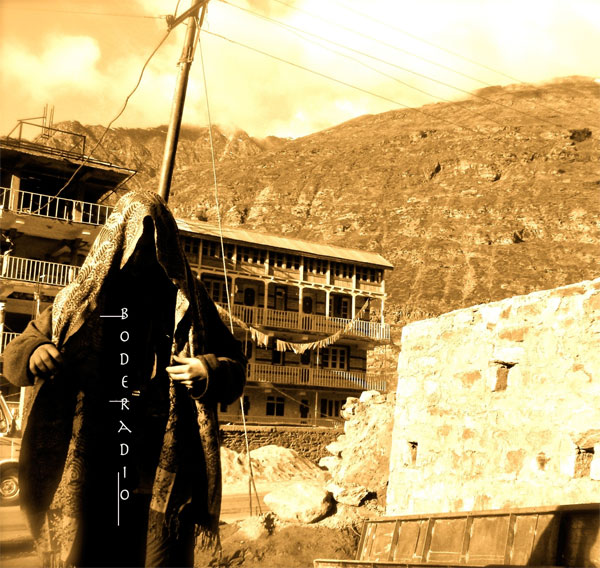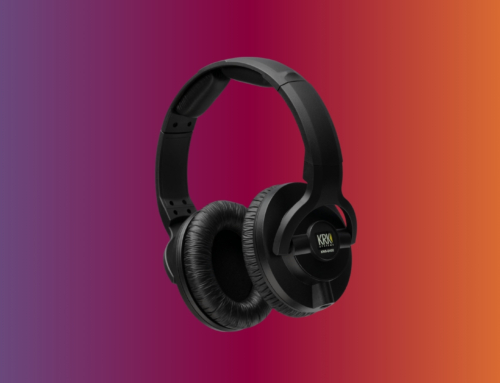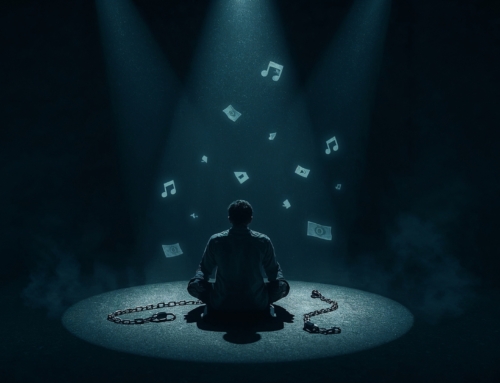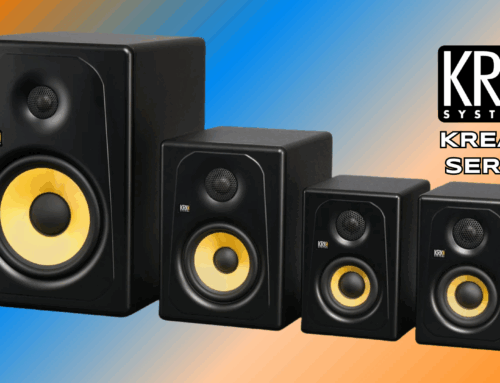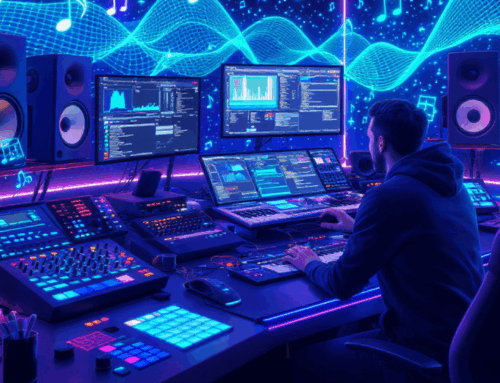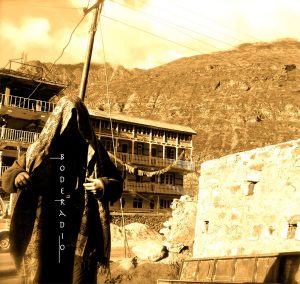 Chicago-based electronica artist and composer, Alex Yoffe, has been making his unique brand of music under the name “Bode Radio” for over a year, recently releasing his debut EP, “Osaka Jazz,” at the beginning of the month. From its rich, dense textures to its diversity in instrumentation and samples, I felt the music explored a great deal of territory often overlooked in the mainstream EDM world. I had a chance to talk with the artist about his compositions and philosophy on music. Here’s what he had to say.
Chicago-based electronica artist and composer, Alex Yoffe, has been making his unique brand of music under the name “Bode Radio” for over a year, recently releasing his debut EP, “Osaka Jazz,” at the beginning of the month. From its rich, dense textures to its diversity in instrumentation and samples, I felt the music explored a great deal of territory often overlooked in the mainstream EDM world. I had a chance to talk with the artist about his compositions and philosophy on music. Here’s what he had to say.
Crossfadr: Can you give us a brief summary of your musical background?
Alex Yoffe: I am a multi-instrumentalist, but my main focuses are guitar, piano, and percussion. I also dabble in the clarinet, harmonica, Indian sitar, Persian santur, and didgeridoo. Javanese Gamelan has been a huge part of my life for the past three years, and I play many of the instruments belonging to that orchestra. Aside from this, I’m a composer of modern western classical music and electroacoustic music, and I’m currently finishing up my B.M. in Composition at the Roosevelt University’s CCPA. I’ve played in various “rock” bands for the past 10 years and was influenced by rock music from an early age. Other influences include hip-hop, jazz, folk, country blues, electronica, funk, etc. Thus, I’ve been exposed to a wide spectrum of the musical world and try to incorporate it into my music as much as possible.
CF: Describe to me your creative process. How long does each track take to write/record? What technology is used? Do you hear the music in your head beforehand, or do you simply start from scratch?
AY: I have no single method for creating the music for Bode Radio. Sometimes I hear scattered ideas in my head and then try to make sense of them musically. Sometimes I envision full ideas. Sometimes I sit down and work from scratch, letting the music take me where it wants to go. Something I’ve been doing more recently is creating the beat first, and then creating music around it. Tracks can take anywhere from a few days of obsessive, nonstop, two hours of sleep work, to months of editing and revisions.
My favorite thing about composing music for Bode Radio is that I have an endless pallet of sounds at my disposal. I’ve always felt limited when writing for my other bands or for a classical ensemble. In western classical, you can’t write a piece for a string quartet and suddenly decide you want a two-second, screaming clarinet line that never comes back again. Getting a clarinet player to sit through that whole piece, waiting for his two seconds of playing time, would be absurd. The same goes for bands. When you’ve got two guitarists, a bassist, and a drummer…that’s it.
I mainly work out of Protools, using prerecorded samples as well as my own recordings of living, breathing instruments. I’m a fan of employing both musique concréte and electronik musik aesthetics. Thus, there are a variety of digitized and acoustic sounds in my music.
CF: There’s a great deal of world music influence throughout these three tracks, especially “Osaka Jazz.” Can you talk a little bit about what instruments are used in that track? Where are they from? Why did you choose to incorporate them?
AY: I’m a huge fan of “non-western” music (although I hate that term). I get very frustrated with composers and groups that try to incorporate non-western elements into their music in a gimmicky sort of way, without any real understanding of the instruments or music. I use non-western elements for the same reason I use western elements, texture. Whether it’s lush, intertwining guitar melodies, microtonal string clusters, or frenzied sitar licks, it’s all music. I love taking instruments out of their traditional, cultural contexts and using them to invoke a human connection.
In “Osaka Jazz,” I wanted textures created from aerophones; the free-jazz brass sounds in the beginning as well as the East Asian bamboo flutes in the end serve that purpose. The Indian tabla aligned with the verbal beat patterns is used to intensify the drama of the moment, creating a tension that needs resolution. These are just a few of the many sound sources throughout the track.
When I listen to non-western music, I don’t hear it any differently than western music. It doesn’t feel exotic or distant to me. To put it into perspective, when I walk through the city, I constantly hear music. The train rumbles low, dissonant clusters, the cars honk in sporadic, twitchy harmonies, and the steps of people walking are layers of percussive, individual rhythms. In my mind, these sounds equal the music of Bach, Radiohead, or anything else for that matter.
 CF: How much are you consciously trying to incorporate your academic knowledge into Bode Radio, and how is this project a diversion from your previous education?
CF: How much are you consciously trying to incorporate your academic knowledge into Bode Radio, and how is this project a diversion from your previous education?
AY: I let everything blend together. In “Redd,” there’s a string arrangement that moves in and out of consonances and dissonances with the main melody, while also being juxtaposed over a hip-hop beat. Some other tracks I’ve been working on include Penderecki influenced sound mass textures. In my western classical compositions, I never pass up an opportunity to let some grunge or punk slip into the music.
I think many people fear treading the lines between various genres and styles of music, and this may be why some listeners may struggle initially with some of my music. My compositions aren’t entirely “academic,” and Bode Radio isn’t entirely “pop.” It isn’t music to put on in the background and tune out, but I’m not making an advanced calculus equation out of it either.
CF: Is there a certain audience you’re trying to reach with your music? If so, how do you see your audience interacting with the music? Will it be on a dance floor, in a DIY space, or through headphones in a bedroom? Why do you feel this is most effective way of having your music heard?
AY: Ideally, I intend for my music to be listened to through headphones. I feel I’ve been most affected by music while being “isolated” from others. You view everything in front of you differently, and I want others to experience this.
The field that I’m working in isn’t performance friendly. I have a million different sound sources operating at once, all working to build the textures I conceive. I don’t want to let the idea that my music isn’t performable to stop me from composing it.
In the 19th century, you could only hear music if you went out to concerts or produced it yourself in your living room. For much of the 20th century, even with the invention of record players, listening to music was still strictly a social thing to a certain extent. Record players weren’t portable, and if you lived in the cities, you could hear music coming from many of the buildings you passed. Now we’re living in a time where music has become much more of isolationist tool through CD players and mp3 players. You can shut yourself out from your surroundings and envelope yourself in music, or you can use music to enhance your perception of reality. You can go anywhere with music. I feel like this allows me to create new textures; it’s a breath of fresh air to not have to worry about how my music will be performed.
In reality however, I’ve realized that people want to hear it live and have that “concert experience.” So I’ve recently devised a way of gigging without letting it affect my compositional process. When I play shows, I play the prerecorded tracks through speakers while improvising similar and complimentary textures using guitars, keyboards, clarinet, and loop pedals. This allows me to keep the integrity of my compositions while dramatizing my music in a performance setting. It’s actually been quite fun to finish a track and then have to sit down and figure out “Okay, how am I going to add more without actually adding more?” It’s pushed me artistically and also satisfies the people who want to hear it loud.
To hear more Bode Radio, check out his Bandcamp at http://kid8081.bandcamp.com/ or his Souncloud at http://soundcloud.com/boderadio
